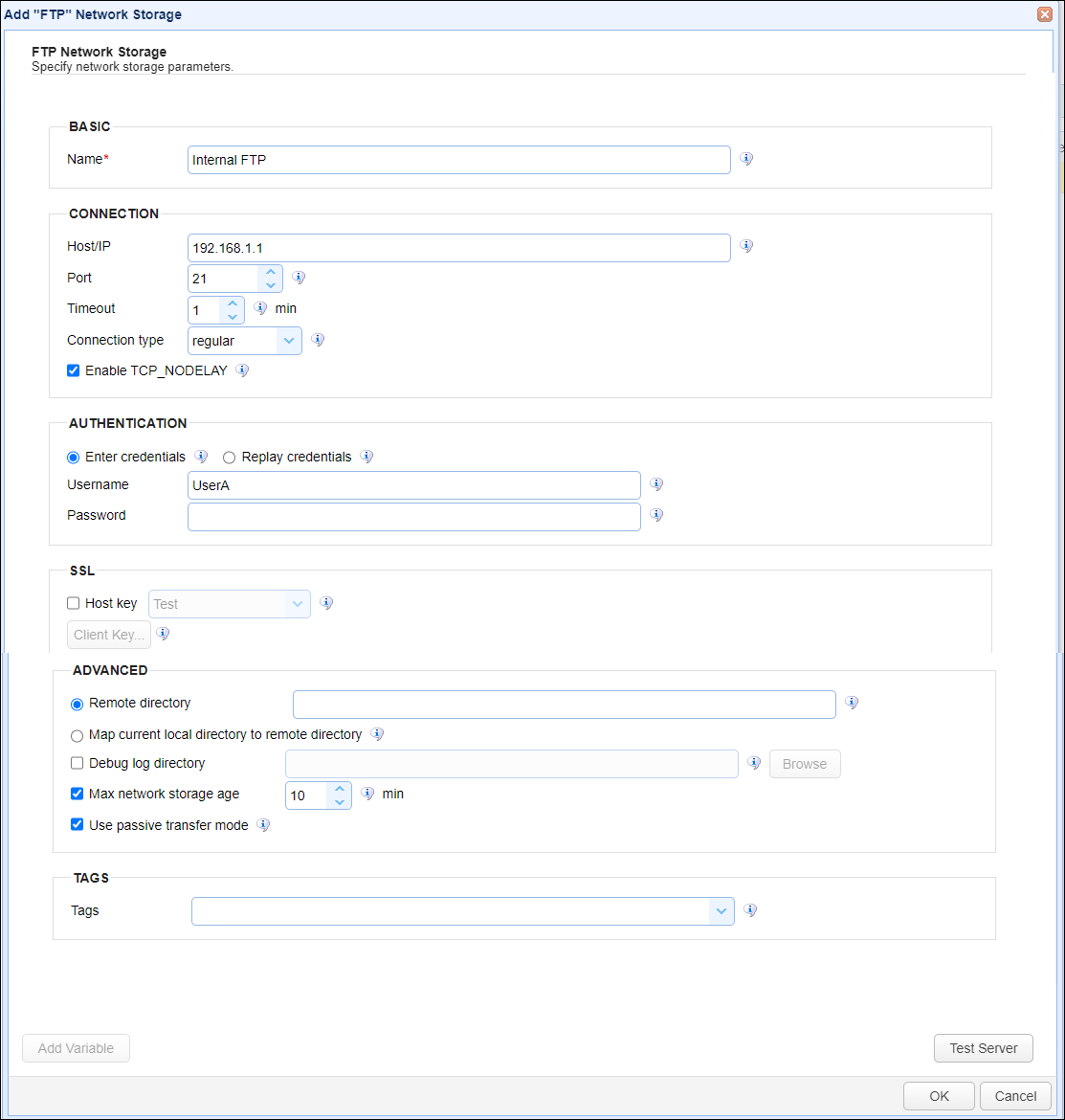FTP network storage

This Network Storage uses an existing FTP or FTPS server as additional storage space.
Adding the FTP Network Storage
In the desired domain, navigate to the ACCOUNTS > Network Storage module. Click Add. The Add Network Storage dialog displays. Select FTP as the Protocol, then click OK. The Add "FTP" Network Storage dialog displays as shown in the image below.

Below is a description of the FTP Network Storage fields.
BASIC
Name — Identifies the unique Network storage name.
CONNECTION
Host/IP — Identifies the remote hostname or IP address of the remote server.
Port — Identifies the port used to communicate with the remote server.
Timeout — Identifies the maximum timeout (in minutes) for establishing a connection to the remote server.
Connection type — Identifies the connection type for the remote server. Options include regular (FTP),explicit SSL and implicit SSL (FTPS).
Enable TCP_NODELAY — If selected, Nagle's algorithm is disabled.
AUTHENTICATION
Enter credentials — If selected, enables the Username and Password fields. The credentials provided are used to connect to the remote FTP server.
-
Username — Identifies the user name for connecting to the remote server.
-
Password — Identifies the password for the user name.
Replay credentials — If selected, uses the current user's credentials instead of a static Username and Password to connect to the remote FTP server.
Note: Replay credentials is not supported for users who connect to the MFT Server using SFTP with public key authentication. This option is set on the domain-level inACCOUNTS > Users > Users > Add/Edit > Require public key authentication for SFTP.
SSL
Host key — If selected, this is the host key associated with the remote service, stored in the Key Manager. Read about Host Keys.
Client key — Click this button to select a client key if the remote service needs to authenticate to the MFT Server using key-based authentication. This option is configurable if you select explicit SSL or implicit SSL for the Connection type field described above. Click Client key button, a Client Key. A dialog displays, with the following options:
-
Use one-time key — Identifies a one-time key used for authentication.
-
Use server key — Identifies an existing server key (stored in the Key Manager) used for authentication.
-
Use key file — Identifies a file-based key used for authentication.
-
Key file password — Identifies the optional client private key password used for this connection. (FTPS/SFTP).
-
ADVANCED
Remote directory — If selected, maps the local virtual path to a specified remote path.
Map current local directory to remote directory — If selected, maps a local virtual path to a remote path with the same name.
Debug log directory — If checked, debug logs are stored in the specified directory.
Max network storage age — If checked, identifies the maximum amount of time (in minutes) to keep the network storage connection in the connection pool.
Use passive transfer mode — If checked, passive mode is used for connecting to the remote server.
TAGS
Tags — Identifies one or more Tags used to limit administrative access to the Network Storage.